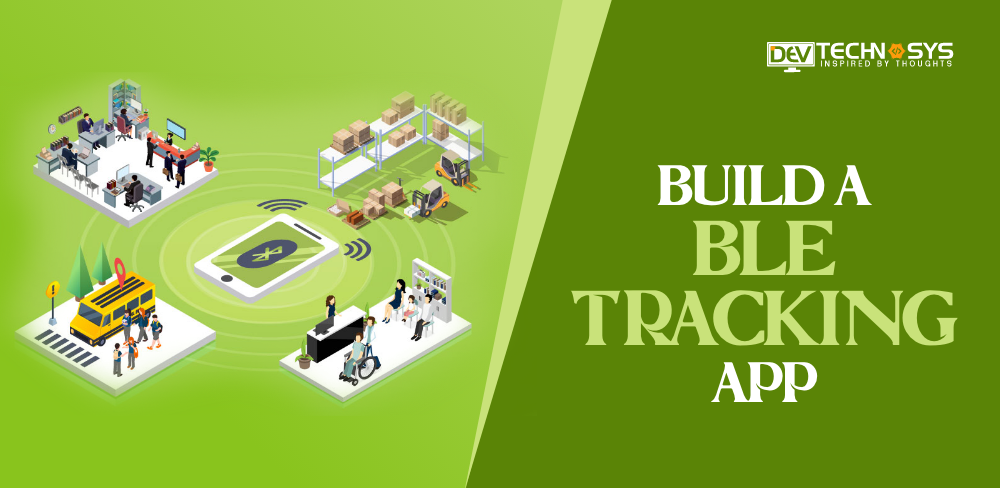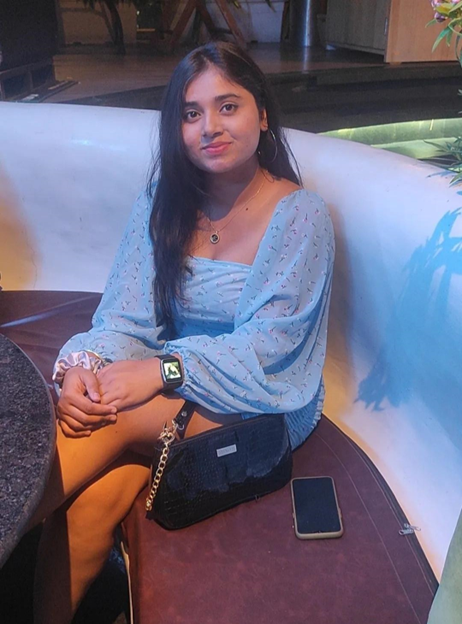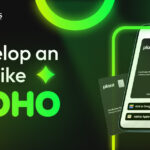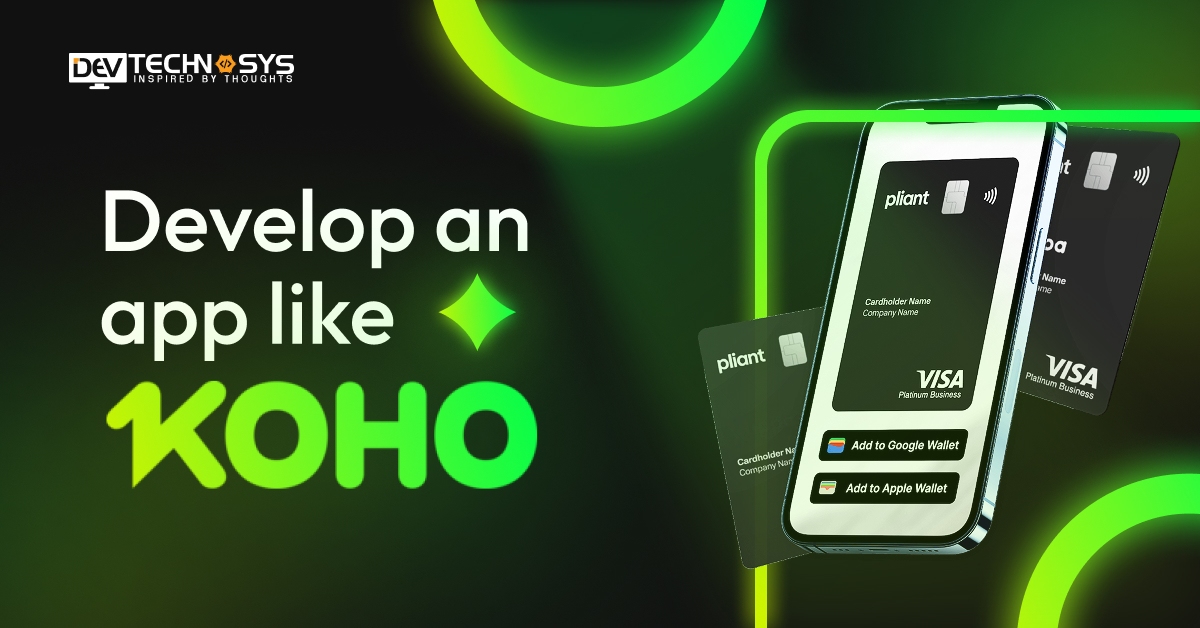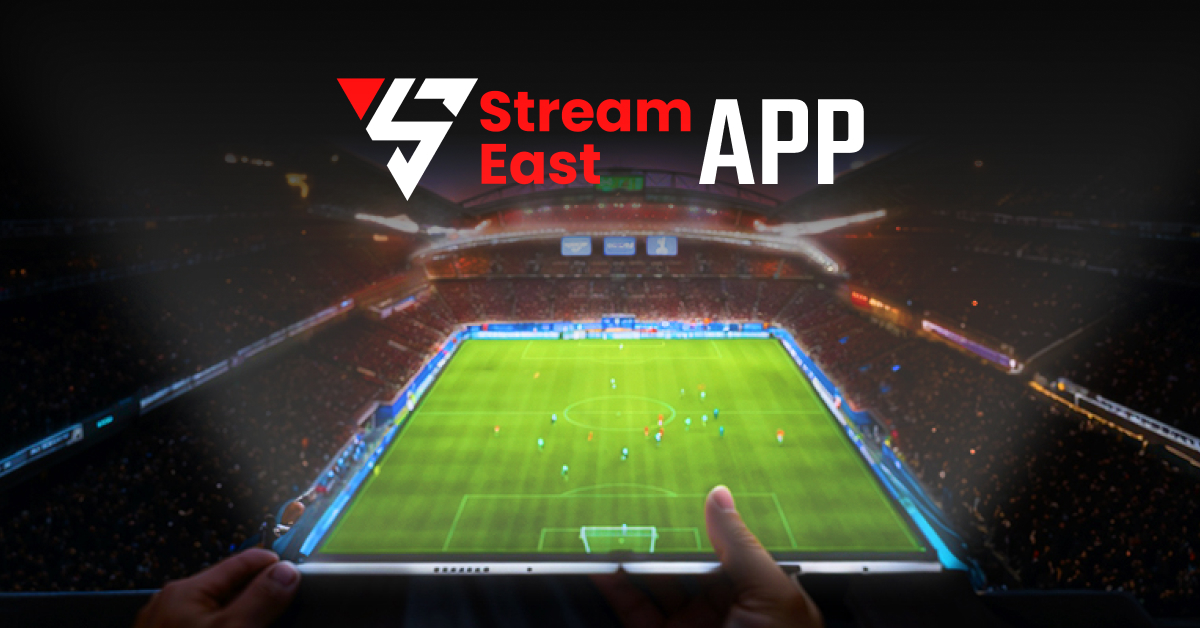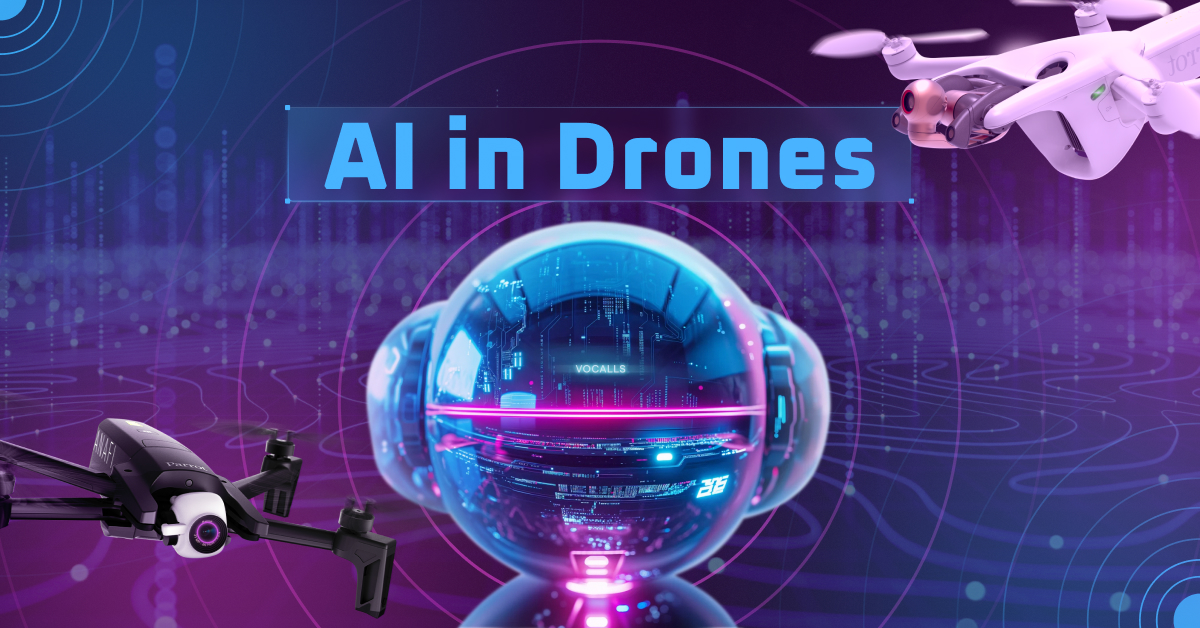“Empower Your Ideas: Crafting a BLE Tracking App from Scratch.”
Quick Summary: Learn to build a BLE tracking app like Tile by exploring key steps such as Bluetooth Low Energy (BLE) integration, mobile app development, and backend setup. Enhance your understanding of location tracking and create a functional solution.
Are you someone who wants to build a BLE tracking app? This is it! Let’s take a generation tour as we reveal the strategies used to increase a modern BLE tracking app like Tile. This blog will explain how to create your fashionable, consumer-friendly monitoring answer by navigating the complex world of Bluetooth Low Energy (BLE) and breaking down the essential techniques.
Imagine a society where misplacing jewels or keys is an aspect of the past. Our guide will assist you build a BLE tracking app by mixing creativity and simplicity smoothly. Come alongside as we simplify the manner and offer you the gear to build a BLE tracking app like Tile, ultimately converting the way you keep in mind the matters that virtually count numbers.
Now, let’s get the adventure started!
Introduction of Tile: A BLE Tracking App
Former employees of Microsoft and Yahoo founded Tile in 2012, and its Bluetooth Low Energy (BLE) monitoring software completely modified the lost-and-discovered marketplace. Smaller than a credit scorecard, the concept was stimulated by founder Michael Oh, who experienced firsthand the frustration due to out-of-place keys.
With over 50 million trackers offered, Tile controls a $3.8 billion market. More than 200 million people have downloaded their software program, which matches with Tiles to locate gadgets consisting of wallets, keys, luggage, or even pets inside Bluetooth variety.
What is A BLE Tracking App & How Does It Work?
The causes of a BLE (Bluetooth Low Energy) monitoring application are to find and keep in tune with the movements of Bluetooth-enabled gadgets—like trackers fixed to personal property—in real-time or through the years. This is how it works:
![]()
1. Device Pairing:
Users create a connection between the BLE tracker app and their Bluetooth-enabled monitoring tool.
2. Signal Emission:
The user mobile tool detects a BLE signal that the tracking tool periodically emits.
3. Data Reception:
The software constantly alternatives up and analyzes those signals to parent out how near and in which manner the associated tool is.
4. Role Calculation:
Based on signal electricity and other variables, the app uses algorithms to determine the tracked device’s role.
5. Real-time Tracking:
Within the app, customers can see the present-day vicinity of their items, with updates based on the movement of the tool.
6. History and Alarms:
In addition to storing past location records, the software program sends out alarms for things like leaving detailed zones or jogging briefs on battery strength.
7. Cloud Integration:
Some packages integrate cloud garage with safe facts backup, giving customers admission to monitoring records on numerous devices.
8. User Interface:
The application makes the location of the tracked device simpler to enter and more handy for users by imparting an intuitive interface.
8 Popular BLE Tracking App
App Name |
Launch Date |
Google Play Store Downloads |
Founders |
Platform Availability |
| Tile | June 2012 | 5M | Michael Oh, Mike Schneider | Android, iOS |
| SmartTag+ (Samsung) | June 2021 | 100M | DJ Koh (Samsung Electronics) | Android, iOS |
| Chipolo | April 2013 | 500K+ | Andreas Fredriksson | Android, iOS |
| Nut Mini | January 2017 | 500K+ | Shenzhen Inventec Technology Co., Ltd. | Android, iOS |
| Cube Tracker | January 2016 | 100K+ | Michael Chen | Android, iOS |
| Esky | June 2018 | 1M | Esky Technology Co., Ltd. | Android, iOS |
| Invoxia | November 2016 | 100K+ | Eric Le Roux | Android, iOS |
| Wunderfind | February 2017 | 1M+ | Martin Kloss | Android, iOS |
Must Have Features of BLE Tracking App
Before you dive into the segment to build a BLE tracking app, it is essential to know the features. This section covers all three panel features that create hype about AI In Smart Home Automation.
Features of the Admin Panel
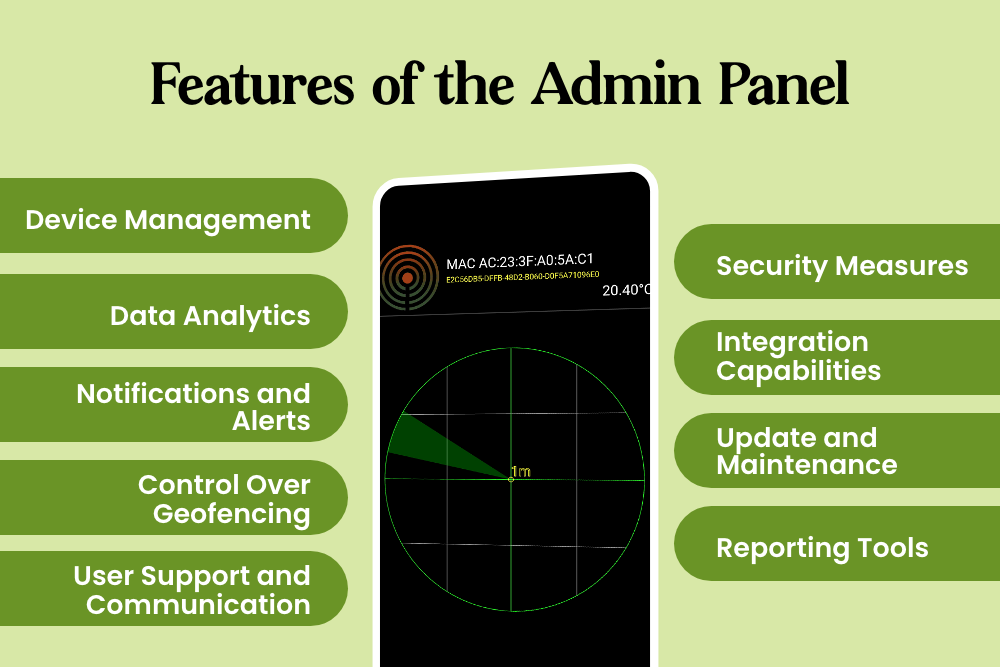
- Device Management:
Keep track of and manipulate all connected devices. It allows directors to improve software, test battery life, and remedy troubles to provide an ideal person revel.
- Data Analytics:
By monitoring consumer traits, tool usage facts, and system overall performance, directors could make nicely informed choices by gaining insights via thorough analytics.
- Notifications and Alerts:
Get updated statistics on a person’s pastime, battery life, and tool repute. It permits you to react fast to any potential problems or irregularities in the monitoring network.
- Control over Geofencing:
It can add, take away, or modify geofencing parameters to improve place-based total capabilities and customize monitoring zones for more straightforward person navigation.
- User Support and Communication:
Assist users in reaching out to you, provide help through chat or notifications, and ensure the machine is responsive sufficiently to respond to questions and problems quickly.
- Security Measures:
Create and hold robust safety methods to protect user records, save unwanted admin reliable and steady tracking environment.
- Integration Capabilities:
Using third-party services or APIs, directors may also easily upload extra functionality to the app and ensure it works with the tracking atmosphere’s developing technologies.
- Update and Maintenance:
Monitor machine updates and protection assignments to ensure the app is continually up-to-date, reliable, and has the most up-to-date capabilities for optimum patron pleasure.
- Reporting Tools:
Get admission to widespread reporting tools to supply insights on gadget fitness, tool overall performance, and user engagement. These insights will assist with strategic selection-making for upcoming upgrades.
Features of the User Panel
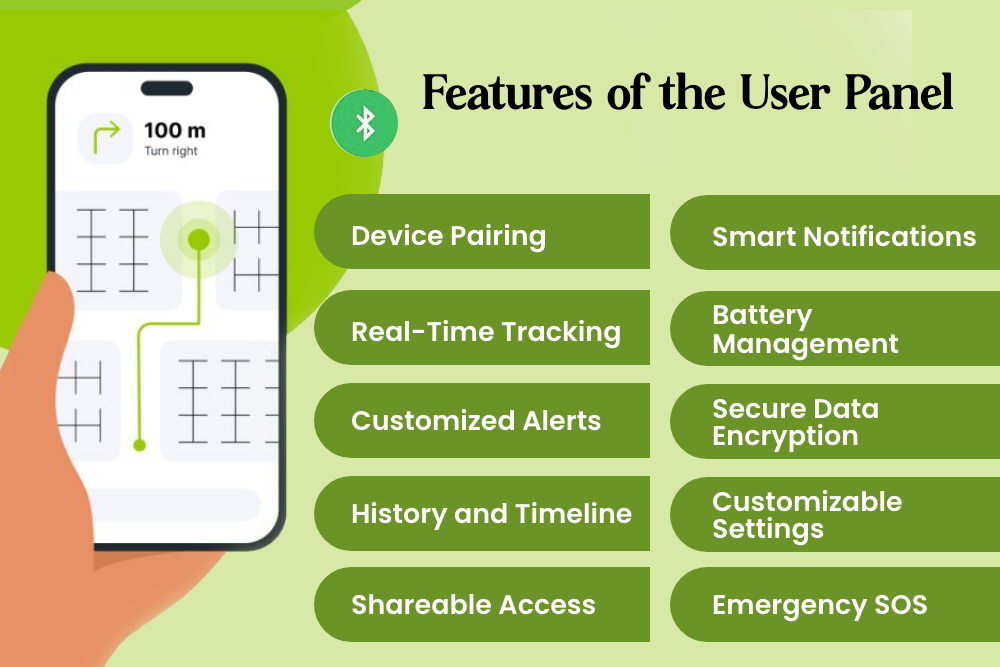
- Device Pairing:
Users might also quickly and, without a doubt, pair their monitoring devices with the logistic app development like Tile to establish a trouble-unfastened connection and facilitate on-the-spot setup.
- Real-Time Tracking:
Take advantage of the benefits of actual-time tracking, which enables customers to check place records, discover belongings exactly, and get speedy data on tool movements.
- Customized Alerts:
For more protection and comfort, personalize signals to your choices. You can receive notifications for low battery existence, geofencing violations, or while your smartphone is out of range.
- History and Timeline:
Users can look beyond facts and follow the path of their possessions by way of accessing a comprehensive timeline of tool moves and sports.
- Shareable Access:
Users can offer friends or loved ones with limited right of entry, allowing several people to track the same tool and encouraging cooperative monitoring activities.
- Smart Notifications:
Get tailored indicators that adjust to your utilization behavior. These alerts will let you live more aware of your surroundings and be more helpful by reminding users to pick up necessities earlier than you depart.
- Battery Management:
Keep an eye on the battery lifestyles of your device and notify customers when to replace or recharge their batteries to preserve ongoing tracking.
- Secure Data Encryption:
End-to-end facts encryption assures users that touchy vicinity data and personal facts are saved safely inside the utility.
- Customizable Settings:
For a more excellent consumer-friendly experience, personalize your retail app development settings in line with non-public tastes.
- Emergency SOS:
Add an emergency SOS function to improve user safety and security. It lets users send signals or misery alerts to exact contacts in an emergency.
Features of the Owner Panel
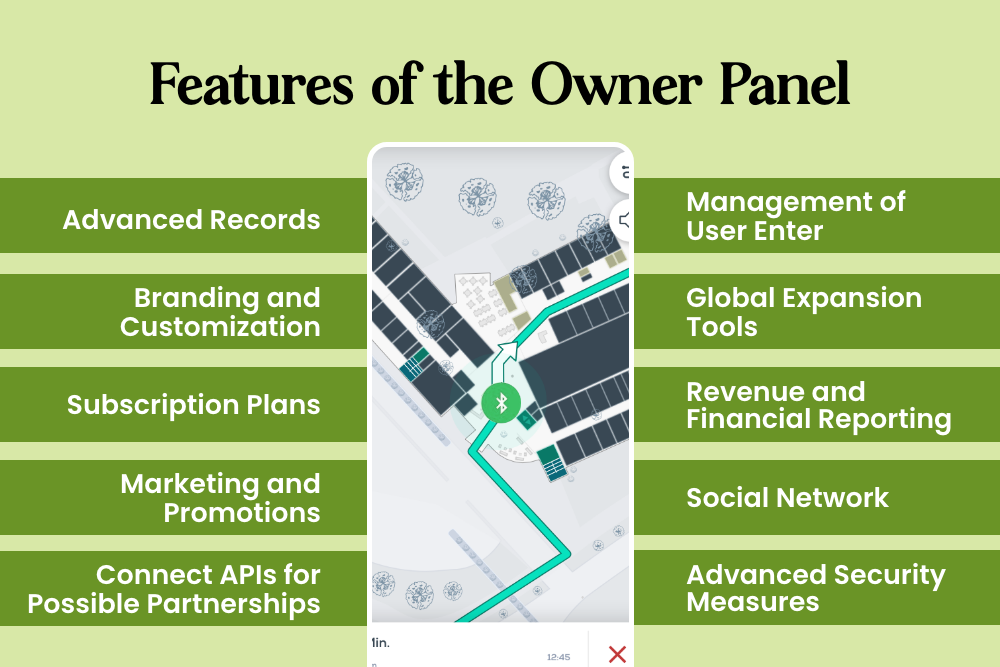
- Advanced Records:
To assist with strategic business selections, proprietors acquire comprehensive data on the operation of their gadgets, consumer interaction, and the monitoring community.
- Branding and Customization:
Tailor the Automotive app development appearance to give users a constant, branded revel while securing its place in the market.
- Subscription Plans:
Manage top-class subscription plans, allowing app owners a chance to monetize their creations and provide users access to more excellent capabilities by growing subscription plans.
- Marketing and Promotions:
By instantly launching campaigns, reductions, and promotions within the app, proprietors may additionally grow person retention and draw new users into the tracking environment.
- Connect APIs for Possible Partnerships:
Connect APIs to permit app owners to paint collectively with other offerings or goods and increase the app’s environment.
- Management of User Enter:
By often tracking and reacting to personal input, proprietors can also ensure fulfilling consumer enjoyment and quickly clear up troubles to hold purchaser pleasure.
- Global Expansion Tools:
Provide owners with the assets they need to help their commercial enterprise develop internationally while contemplating regional possibilities, language compatibility, and a worldwide consumer base.
- Revenue and Financial Reporting:
Get access to comprehensive monetary reviews on music profits, charges, and profit margins. These reports can assist enterprise proprietors in planning their price range and broadening growth plans.
- Social Network:
Build a network within the IoT app development by allowing builders to encompass social media tools, boards, and dialogue forums to improve user interaction and connectedness.
- Advanced Security Measures:
To assure the complete integrity and safety of the monitoring app’s infrastructure and user information, put in force superior safety features at the proprietor degree.
Steps To Build A BLE Tracking App Like Tile
Now, the time has come when you must know the steps to build a BLE tracking app with our competence guide. In this section, we covered almost everything from planning to maintenance, which you should know about. So dive into this section with incredible steps to build a BLE tracking app right away.
![]()
Stage 1: Project Planning and Research
This is the first stage to build a BLE tracking app in which you must start with the help of describing the goals of your BLE monitoring application. To realize consumer desires and rival answers, conduct marketplace studies. Specify vital traits such as the user interface, tracking accuracy, and device compatibility.
Put together a talented location-tracking app development company that consists of UI/UX designers, assignment managers, and builders for iOS and Android. Set finances and agenda at the same time as considering any capacity boundaries with BLE technology and mobile systems.
Stage 2: Conceptualization and Wireframing
Get in touch with the asset-tracking app development company to supply wireframes and mockups that illustrate the capability and design of the app. Pay interest to a user interface that is easy to use, with a visually appealing design and smooth navigation.
Define user journeys and consider stakeholder input. Analyze feasible Bluetooth Low Energy (BLE) connectivity issues and give you fixes for quality monitoring precision. Adjust wireframes to mirror consumer expectancies and the experience’s dreams.
Stage 3: Backend Development
Start operating on the backend to help the primary features of the app. Select a reliable database system and server structure for storing and retrieving information. To build a BLE tracking app, create clean connections between the monitoring gadgets and the app, and use BLE communique requirements.
Take sturdy protection precautions to guard consumer information. Work closely with a mobile app development company to enhance statistics processing for real-time updates and comprise the tracking algorithms. To establish the backend infrastructure’s dependability and effectiveness, very well take a look at it.
Stage 4: BLE Integration and Testing
Put your attention on integrating BLE, setting monitoring algorithms, and beacon conversation protocols into the exercise. To ensure that a range of BLE-enabled gadgets are well suited, collaborate carefully with developers.
To resolve connectivity problems, maximize battery lifestyles, and enhance tracking accuracy, do a lot of testing. Make use of simulation tools to test the app’s capability in various situations and conditions. Work on the side of QA testers to find and fasten any BLE connectivity-related defects or problems.
Stage 5: Frontend Development
Start running on the front give up of the undertaking, giving the wireframes a consumer-friendly interface. In order to construct a visually attractive design that is well matched with your brand, work with UI/UX designers. Include backend features in the front with an emphasis on responsive design and real-time information updates.
Make sure the app is optimized for each of the iOS and Android working structures to provide a unified personal experience on all devices. Test designs and usability iteratively, making necessary modifications to the front end in response to user input and new developments.
Stage 6: Location Services and Permissions
Use place services and permissions to enhance your app’s monitoring precision. Incorporate user-pleasant permission prompts to ensure adherence to privacy requirements. Create algorithms that provide precise role facts by combining BLE and GPS information.
Hire a mobile app developer with years of experience to maximize battery lifestyles while historical past-going services. Carry out thorough checking to affirm the precision and effectiveness of area monitoring and make the desired adjustments to enhance performance.
Stage 7: User Feedback and Iteration
Give a confined wide variety of users access to the app’s beta version, even as soliciting their input and solving any issues that arise from actual use. To study more approximately the choices and behavior of users, appoint analytics technologies.
Iterate the app in reaction to user feedback, emphasizing characteristic enhancement, overall performance optimization, and improving the person experience as a whole. Maintain this feedback loop to make sure that user expectancies are met and development is ongoing.
Stage 8: Deployment and Marketing
Last but not least, the stage to build a BLE tracking app in which you complete deployment plans and advertising and marketing procedures in advance of the app’s formal release. For a simultaneous launch on the iOS and Android platforms, arrange with the app stores.
Run successful advertising tasks to attract users and lift consciousness. Track the app’s capability once it launches and take short action to remedy any surprising problems.
Apply updates in response to consumer feedback and new technological trends. Maintain consumer interaction via customer support channels to accumulate feedback for upcoming updates and give a boost to your app’s status within the marketplace.
How Much Does It Cost To Build BLE Tracking App Like Tile?
The cost to build a BLE tracking app includes development, design, and testing, and those are the factors that are among the elements that affect the entire cost of development. The intricacy of the features, the platform (iOS, Android, or each), and the hourly cost of hiring a mobile app developer can all affect the final cost. Here’s are some factors clarification:
Cost Components |
Estimations |
| Simple App Development | $8,000 – $16,000 |
| Average App Development | $16,000- $25,000 |
| Complex App Development | $25,000+ |
Remember that those are the most effective approximations and that the final cost to develop a mobile app like Tile may want to alternate depending on particular wishes and additional functions. Real-time monitoring, consumer identity, and device compatibility are a few examples of factors which can affect the total cost to build a BLE tracking app like Tile.
The ongoing cost for updates and aid must additionally be taken into consideration. A hyperlocal app development service can offer you a more excellent estimate that is unique to your challenge.
How Much Does It Cost To Maintain A BLE Tracking App Like Tile?
The mobile app maintenance and support service for a BLE tracking app consisting of Tile generally varies from 15–25% of the overall cost of a BLE tracking app like Tile, which can run from $8k to $25k. For example, a yearly maintenance cost range of $3,000 to $4,000 is probably related to a $20,000 cost to a BLE tracking app like Tile.
Updates, protection patches, bug fixes, and adjusting to new running gadget versions are examples of maintenance responsibilities. It ensures that the app remains up-to-date and runs nicely.
Get in touch with our knowledgeable Android app development team at Technosys to talk about your specific needs and acquire complete insights on maintenance costs. We aim to provide customized answers that will ensure the existence and non-stop fulfillment of your Bluetooth tracker Android.
Why Should You Build A BLE Tracking App Like Tile?
For business, it is fantastic opportunity to build a BLE tracking app that uses Bluetooth Low Energy (BLE) like Tile, which offers a very appealing potential. With its many uses in asset control, user ease, and private belonging monitoring, this modern-day technology has grown to be very famous.
Here are six solid facts for business owners to reflect on when considering create a mobile app like Tile:
1. Growing Market Demand:
BLE tracking apps are seeing a significant increase in demand due to the fast-paced international of today and the developing need for innovative, linked solutions. Customers are looking for robust solutions to monitor their assets, which include digital devices, wallets, and keys.
Interest in connected devices that make normal obligations less complicated is developing as the Internet of Things (IoT) gains traction. By providing a user-pleasant app like tiles to find lost things that meet the demands of both individuals and companies, marketers may additionally capitalize on this want.
2. Diverse Use Cases and Industries:
Beyond non-public use, the tile location finder app has packages throughout other industries. Entrepreneurs can customize their software to meet optimistic necessities, consisting of retail inventory management, production equipment tracking, or logistics efficiency.
Because of BLE tracking’s adaptability, business owners can now look at new markets and sectors, resulting in an improved and sundry enterprise version.
3. Innovative Features and Differentiation:
By adding current functionality, marketers can differentiate their BLE tracking software program from the competition. A few options consist of more advantageous analytics for records-pushed insights, voice-activated device compatibility, and integration with augmented truth for accurate place visualization.
Providing exclusive capabilities gives a business an aggressive part of the marketplace, further drawing in users. Entrepreneurs need to focus on creating progressive solutions to cutting-edge problems, an excellent way to differentiate their Bluetooth detector app from the competition.
4. Monetization Opportunities:
BLE tracking apps give commercial enterprise owners numerous methods to make cash. It is viable to research other sales streams similarly to the preliminary app purchase or subscription version.
It may be operating with producers to integrate monitoring elements into their merchandise, presenting upscale features, or partnering with companies to create precise answers. Additionally, business owners can use the consumer information from the Bluetooth tracker app to goal partnerships or advertisements, producing a scalable and lengthy-lasting supply of income.
5. Scalability and Global Reach:
Applications for BLE tracking can be globally scalable, catering to a whole lot of personal demographics and geographic places. To make certain enormous accessibility, marketers can design their software to paint with a variety of gadgets and running systems.
Entrepreneurs may also reach international markets and meet plenty of consumer wishes by growing a stable advertising plan and imposing localization strategies. Scalability increases the tile locator app’s perceived fee within the eyes of viable partners and traders in addition to growing its user base.
Ready To Build A BLE Tracking App Like Tile?
Of course! Connect with the team of Dev Technosys to build a BLE tracking app where you can get a smooth and creative process. Our development team has a report of achievement in app development and blends user-centric techniques with BLE technical competence.
Our priorities are scalability, patron experience, and staying in advance of marketplace developments. Put your trust with in Dev Technosys to recognize your vision and build a BLE tracking app that meets your unique wishes. Together, permit’s exit in this exciting adventure!
Frequently Asked Questions
1. How Much Does It Cost To Build A BLE Tracking App Like Tile?
The cost to develop a BLE tracking app varies from $8,000 to $25,000 depending on several standards like s trying out, backend infrastructure, design, development, and protection. The remaining cost is determined by customization and particular functions.
2. How Much Time Does It Take To Build A BLE Tracking App Like Tile?
The duration to build a BLE tracking app takes 4 to nine months to expand. Features, complexity, platform (iOS, Android, or both), testing, and refinement levels all affect how long an assignment takes to complete.
3. What Are The Benefits To Build A BLE Tracking App Like Tile?
There are numerous benefits to building a BLE tracking app as a competitive aspect via allowing you to fulfill the increasing market calls, serve a whole lot of industries, introduce novel features, look into new sales streams, acquire international scalability, and combine with cutting-edge technology.
4. Why Choose Us To Build A BLE Tracking App Like Tile?
If you want to build a BLE tracking app, select us as a great choice as we provide transparency, development, know-how of BLE generation, dedication to innovation, and client-centered technique. In order to ensure a successful app release, we region high precedence on personal experience, scalability, and keeping up with marketplace traits.
5. How to Make Money With an App Like Tile?
Monetization from your app, consisting of Tile, by using targeted advertising and marketing, top-rate feature partnerships, tool manufacturer partnerships, subscription fashions, and custom solution partnerships. Using user statistics sensibly opens up new enterprise opportunities as nicely.
